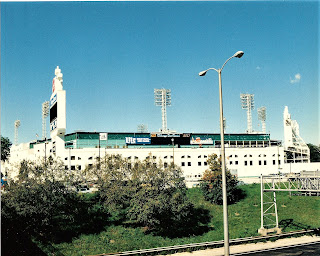Today is 21st anniversary of the mostly
forgotten Y2K, when some predicted all havoc would break loose after the stroke
of midnight, January 1, 2000. Our family had a fairly unique experience on the
eve of the nonevent.
Back in those days, booking travel – especially around the year-end holiday season – was much more difficult before the onset of online travel sites. Because Janet was a Chicago Public Schools (CPS) teacher and our daughter still in school, the end of December/beginning of January offered the only two weeks of winter travel to her parents’ former apartment in South Florida. Choice airline dates filled up quickly, so we routinely got on the phone early in the year to secure the best itinerary and fares. Janet had to return to work and Marisa to college right after the first of the year, so we booked our return flight on December 31, 1999. My mother booked the same flights, visiting her friend Dort a few towns over. Months later we heard about Y2K and worries about airplanes falling from the skies.
We didn’t even try to rebook, knowing it would be next to impossible to find decent dates and fares. My intuition was these catastrophes weren’t going to happen, reinforced by the opinion of my second cousin, Jim Wolfson, an MIT Ph.D., that the airlines had run hundreds of simulations to ensure their computers would be compliant with the change from 1 to 2. By then I had greater worries: my partner, with whom we had started a business in January 1998 and grew it into one of the 10 largest public relations agencies in Chicago, was basically forcing me out of the company.
The four of us ended up on the last United Airlines flight out of Fort Lauderdale-Hollywood International Airport in the 1900s (not the 20th century, which ended December 31, 2000). The airport was nearly deserted, unlike the usual hustle-and-bustle of holiday times. Besides the relative quiet, I remember one other event.
Our refrigerator had been cleaned out before the trip home, so we opted to get food at airport. The only concession open was Miami Subs, so subs it would be. There was one person ahead of us in line, and the man perfectly personified my father’s favorite rhetorical question: “How come there are always more horses’ assess than horses?” He ordered a hamburger and was told they didn’t have any, to which he snidely replied, “Is it because you don’t have any or you just don’t feel to make one for me?” After receiving the same answer, Mr. Entitled (probably from New York) demanded to speak to the manager. He stepped aside; we ordered our subs and left before finding the result.
Our plane landed – probably early – at O’Hare around 9 p.m. Because there were four of us, we hired a limo to take us home. O’Hare was also virtually deserted, thanks to Y2K and the late hour, probably as deserted as it would be until the pandemic some 20 years later would bring air travel to a halt. The expressways home were a breeze; virtually nobody returning to the city from O’Hare and the fact that most people were probably already at their New Year’s Eve destination.
So, all was well that ended well. We experienced the easiest airplane trip of our lives and I negotiated an acceptable exit from my company effective March 31. None of you reading this will have to worry about Y3K; in fact, only your youngest children/grandchildren will see 2100. Let’s hope the planet hasn’t been ruined by then.

























